Female Reproductive Embryology and Anatomy
Between weeks 1 through 6, female and male embryos are phenotypically indistinguishable. By week 10, the genitalia begin to have male and female characteristics. By week 20, phenotypic differentiation is complete.
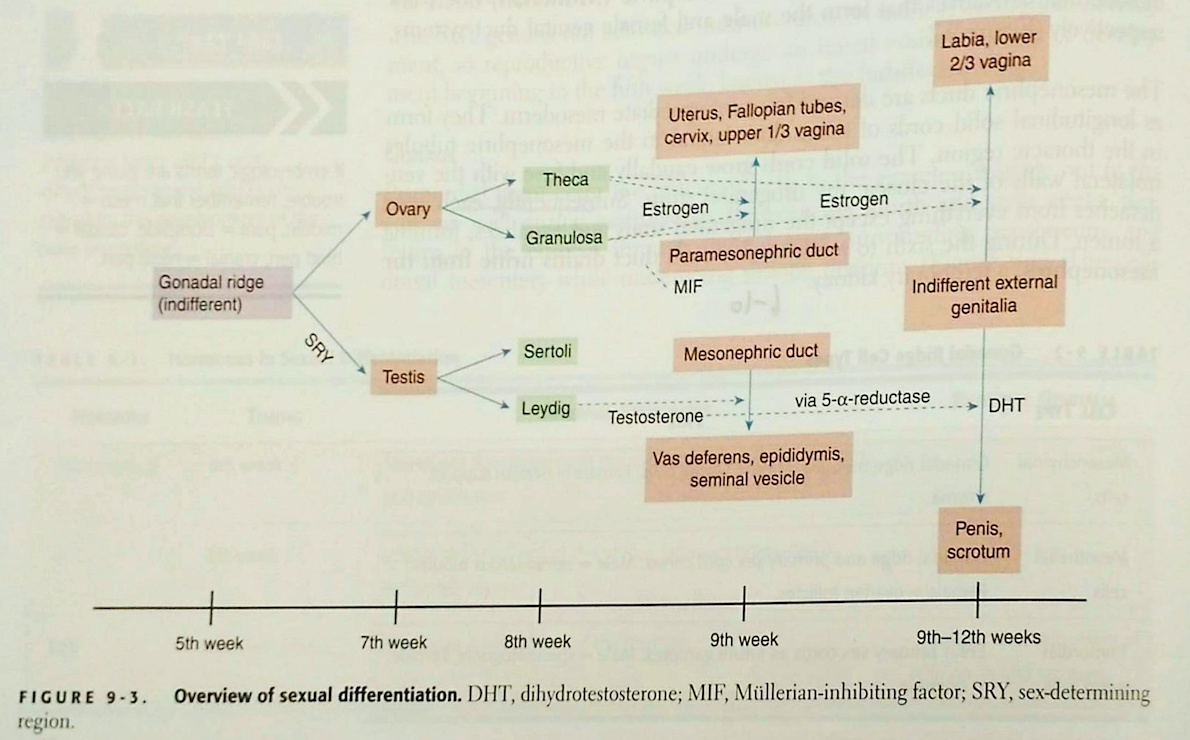
The mesonephric duct, also known as the Wolffian duct, gives rise to the:
- Seminal vesicles
- Epididymis
- Vas deferens (or ductus deferens)
- Ejaculatory duct
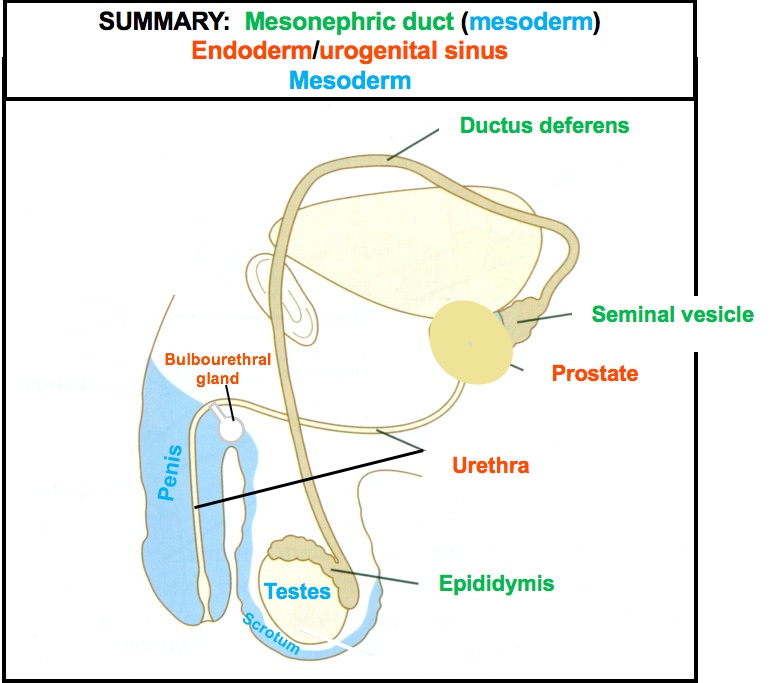

Following dihydrotestosterone exposure, the urogenital sinus of the male embryo gives rise to:
- Urinary bladder
- Prostatic urethra
- Membranous urethra
- Proximal penile urethra
- Bulbourethral glands of Cowper
- Prostate gland
| DHT | Estrogen | |
|---|---|---|
| Glans penis, Corpus spongiosus, Corpus cavernosus | Genital Tubercle | Glans clitoris, Vestibular bulbs |
| Cowper's gland, Prostate gland | Urogenital Sinus | Bartholin gland, Skene gland |
| Penile urethra, Ventral fold | Urogenital Folds | Labia minora |
| Scrotum | Labioscrotal Swelling | Labia majora |

Following dihydrotestosterone exposure, the labioscrotal folds give rise to the scrotum..
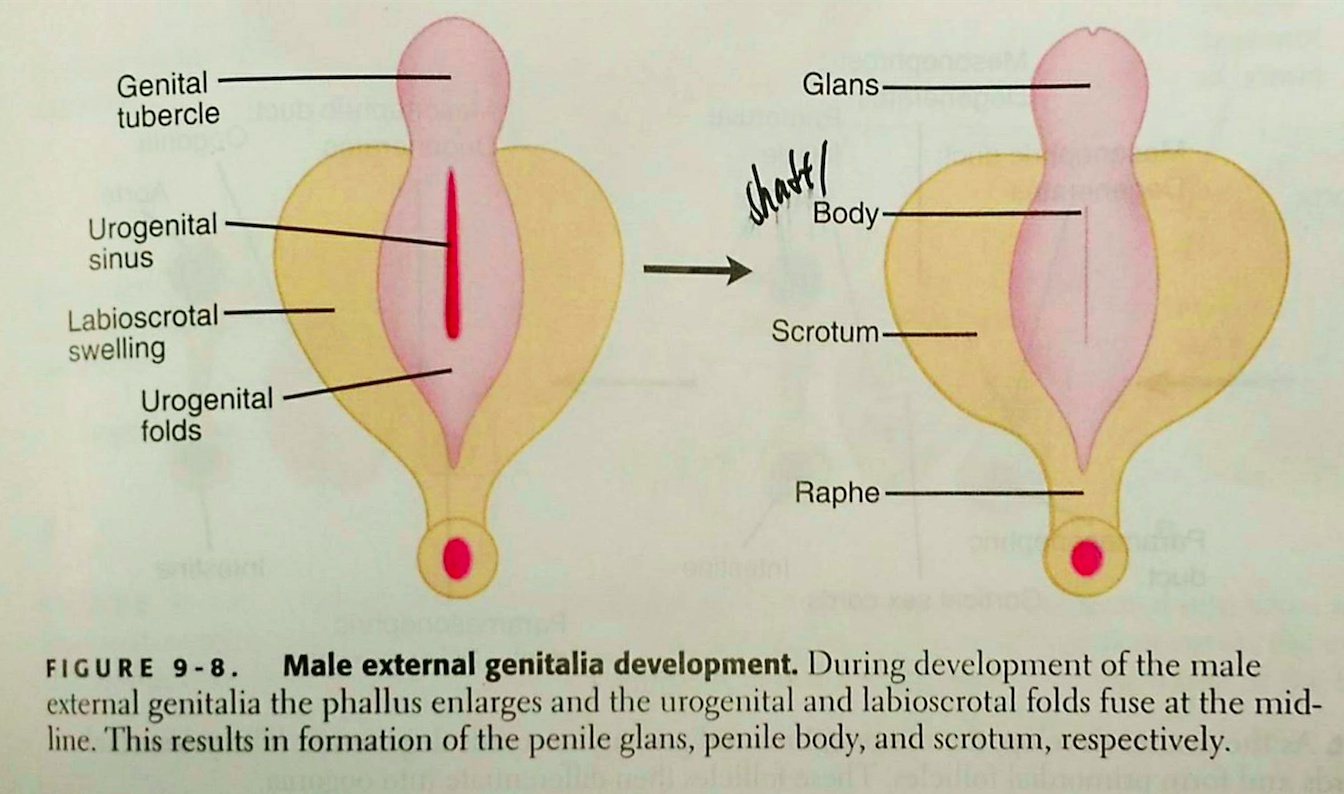
Following dihydrotestosterone exposure, the genital tubercle gives rise to the:
- Glans penis
- Corpus spongiosum
- Corpus cavernosum
| DHT | Estrogen | |
|---|---|---|
| Glans penis, Corpus spongiosus, Corpus cavernosus | Genital Tubercle | Glans clitoris, Vestibular bulbs |
| Cowper's gland, Prostate gland | Urogenital Sinus | Bartholin gland, Skene gland |
| Penile urethra, Ventral fold | Urogenital Folds | Labia minora |
| Scrotum | Labioscrotal Swelling | Labia majora |

The ectoderm of the glans penis gives rise to the distal penile urethra (spongy urethra).
Following dihydrotestosterone exposure, the urogenital folds develop into the proximal penile urethra and the ventral aspect of the penile shaft.
| DHT | Estrogen | |
|---|---|---|
| Glans penis, Corpus spongiosus, Corpus cavernosus | Genital Tubercle | Glans clitoris, Vestibular bulbs |
| Cowper's gland, Prostate gland | Urogenital Sinus | Bartholin gland, Skene gland |
| Penile urethra, Ventral fold | Urogenital Folds | Labia minora |
| Scrotum | Labioscrotal Swelling | Labia majora |
 |
The paramesonephric duct gives rise to the:
- Fallopian tubes
- Uterus
- Cervix
- Upper vagina
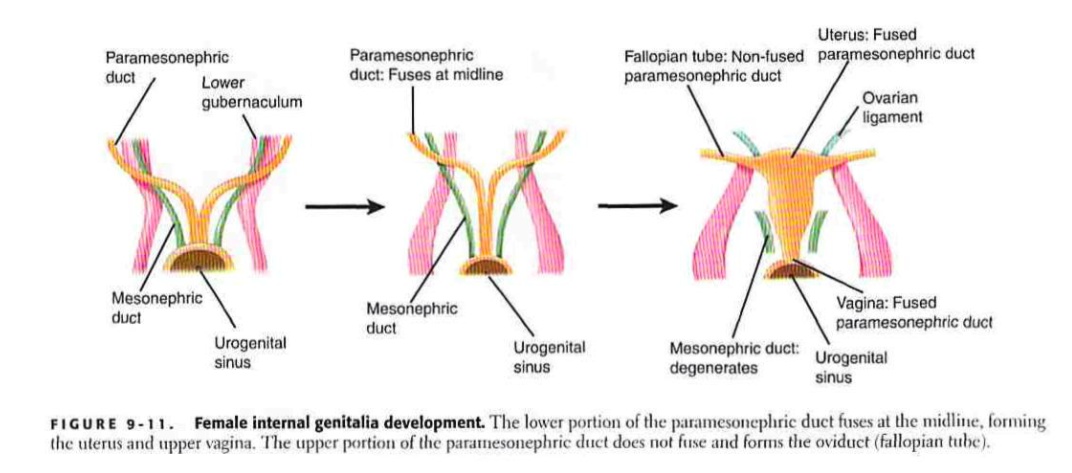
Following estrogen exposure, the female urogenital sinus gives rise to:
- Lower 2/3 of the vagina
- Greater vestibular glands of Bartholin
- Urethral glands of Skene
| DHT | dsfd | Estrogen | | ----- ---- | ------ ----- | --------- | | Glans penis, Corpus spongiosus, Corpus cavernosus | Genital Tubercle | Glans clitoris, Vestibular bulbs | | Cowper's gland, Prostate gland | Urogenital Sinus | Bartholin gland, Skene gland | | Penile urethra, Ventral fold | Urogenital Folds | Labia minora | | Scrotum | Labioscrotal Swelling | Labia majora |
The female genital tubercle, following estrogen exposure, gives rise to the clitoris and vestibular bulbs.
| DHT | Estrogen | |
|---|---|---|
| Glans penis, Corpus spongiosus, Corpus cavernosus | Genital Tubercle | Glans clitoris, Vestibular bulbs |
| Cowper's gland, Prostate gland | Urogenital Sinus | Bartholin gland, Skene gland |
| Penile urethra, Ventral fold | Urogenital Folds | Labia minora |
| Scrotum | Labioscrotal Swelling | Labia majora |
The female labioscrotal folds (or swellings) around the genital tubercle give rise to the labia majora.
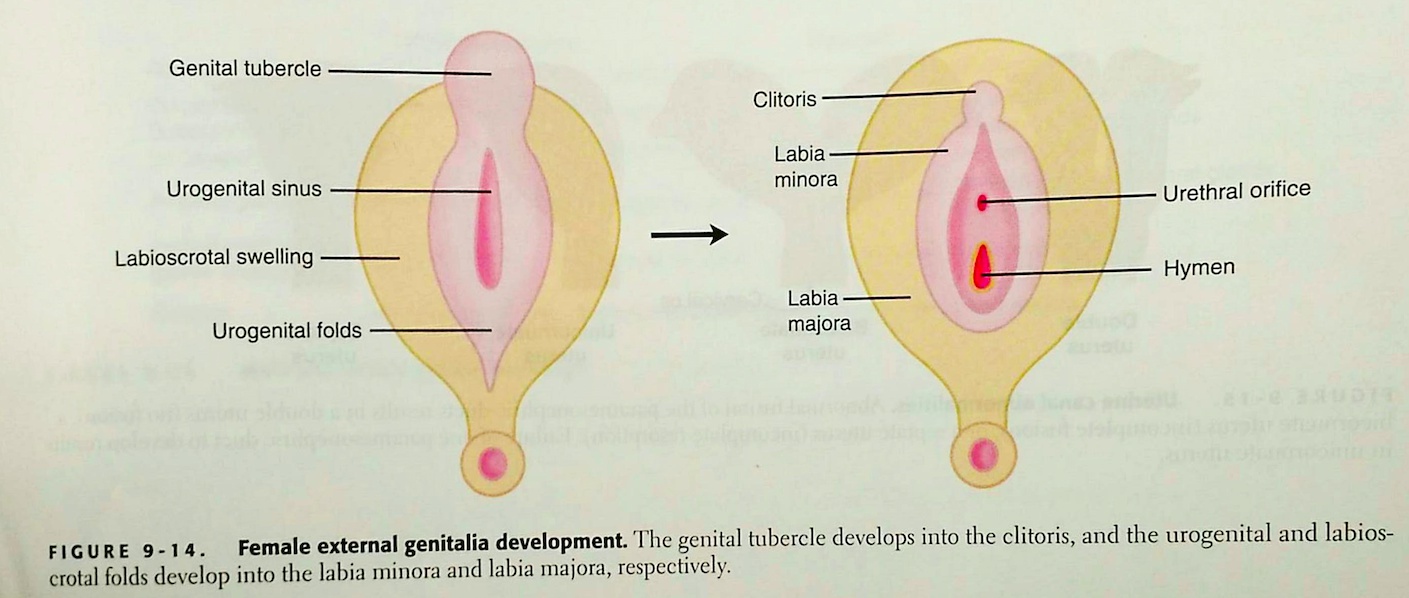
Following estrogen exposure, the urogenital folds give rise to the labia minora.

Primary amenorrhea, with normal secondary sexual features, may develop as a result of paramesonephric duct development anomalies.
A bicornate uterus develops when the paramesonephric ducts fails to fuse completely, resulting in a two lumen uterus.
- **Upper end of the urogenital sinus **(continuous with the allantois, endodermal)
- Mesonephric ducts form the trigone (mesodermal)
Uterine (Mullerian duct) anomalies
c
Bicornuate Uterus:Condition where the uterus has two horns entering a common vagina.Etiology of bicornuate uterus is due to **partial fusion of the paramesonephric ducts.**Clinically can present with urinary tract abnormalities and infertility.In pregnant women, bicornuate uterus is associated with increased risk of bleeding, spontaneous abortion, or premature delivery.
c
**Septate uterus: **Most common type of congenital uterine anomaly (~55%)Results from partial or complete failure of resorption of the uterovaginal septum after fusion of the para-mesonephric ducts. Associated with a high rate of miscarriage and infertility. Treated with septoplasty to form a single uterine cavity without perforating the uterus.
c
**Uterus didelphys: ****Condition where there is complete duplication of the uterus, vagina and cervix. **Results from **complete failure of fusion of the para-mesonephric ducts. **Pregnancy is possible for these individuals.